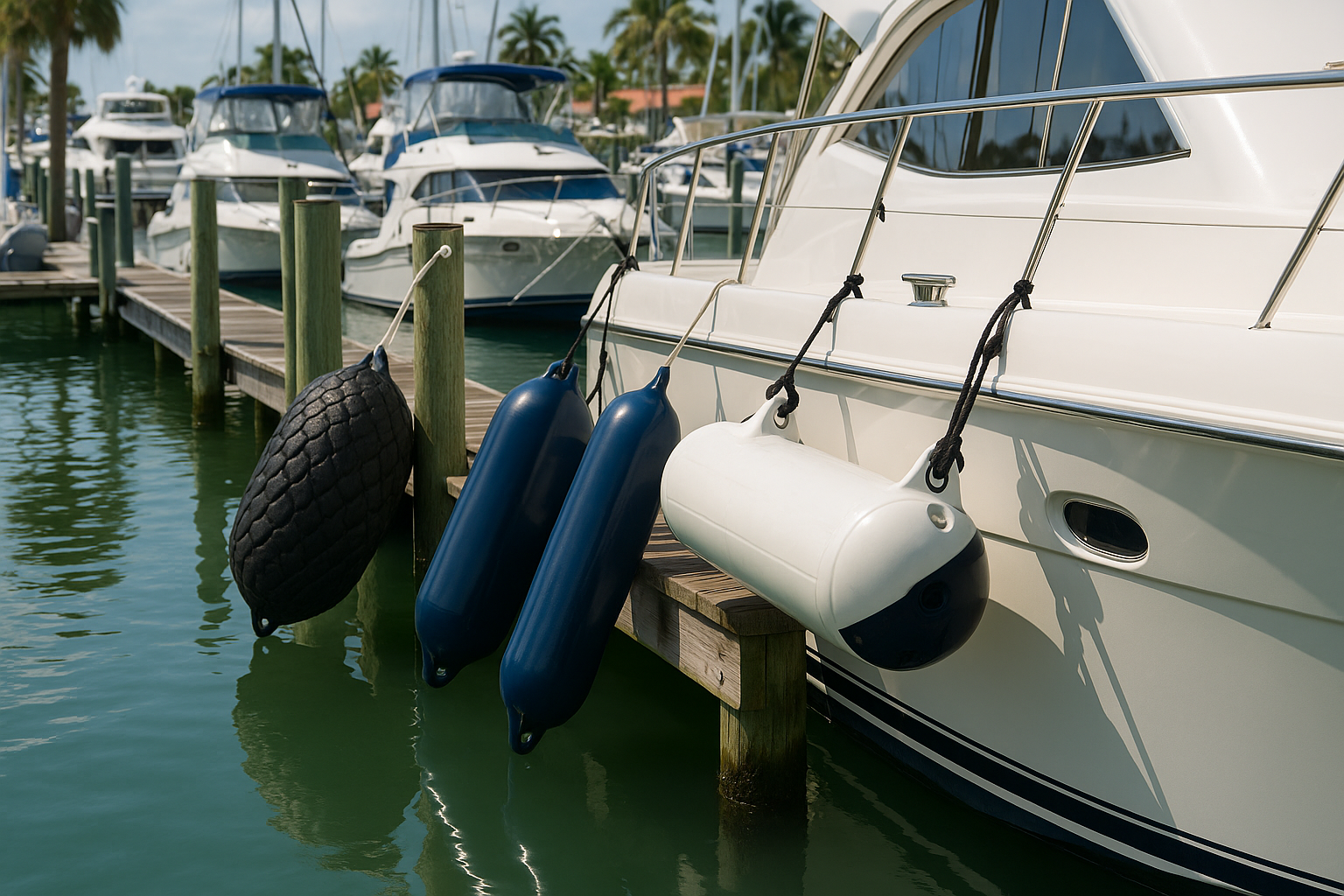Protection isn't optional when you're navigating Florida's packed marinas. Every dock approach is a calculated risk, and your fenders are the only thing standing between your hull and costly damage.

The Marina Dance
Florida's waterways pack more boats per square foot than anywhere else in the country. Tight slips, shifting tides, and weekend warriors who think "no wake zone" means "slow down eventually" create a perfect storm of potential contact points.
The math is simple - more boats equal more movement, more wake action, and more chances for things to go wrong. Your fender strategy isn't just about having something between you and the dock. It's about creating a defensive perimeter that works in real-world conditions.
Not All Cushions Are Created Equal
The market floods us with options, but experience shows only certain fender types hold up to Florida's unique challenges. The difference between adequate protection and exceptional security comes down to strategic choices.
Professional captains and seasoned boaters consistently reach for specific fender types that deliver under pressure. These aren't just recommendations - they're battle-tested solutions that have proven their worth in the busiest marinas.
- Cylindrical fenders excel at versatile protection
- Flat panel fenders maximize coverage with minimal space
- Ball fenders handle heavy displacement
- Corner fenders protect vulnerable spots
- Hybrid systems combine multiple types for optimal coverage
The Performance Players
Cylindrical fenders dominate the Florida marina scene for good reason. Their vertical hang provides consistent protection regardless of tide levels, and their rolling action disperses energy better than static options. When properly sized, they create a reliable buffer zone that works in virtually any slip configuration.
Flat panel fenders shine in tight quarters where space management matters most. Their slim profile doesn't compromise protection, and their larger surface area distributes impact across a wider zone. For boats dealing with fixed docks or frequent rafting situations, they're invaluable.
- Double-braided construction resists UV damage
- Marine-grade materials prevent marking and staining
- Reinforced attachment points handle repeated stress
- Quick-adjust systems allow rapid deployment
Size Matters More Than You Think
The biggest mistake we see isn't choosing the wrong type - it's choosing the wrong size. Undersized fenders create a false sense of security. They might look fine on a calm day, but they'll fail exactly when you need them most.
Professional guidance suggests fenders should be at least 1 inch in diameter for every 4-5 feet of boat length. But in Florida's busy marinas, going one size up from that baseline isn't just prudent - it's essential.
Strategic Deployment Changes Everything
Even the best fenders fail when poorly positioned. Coverage gaps and improper spacing create vulnerable points that experienced boaters know to avoid. The key is creating overlapping zones of protection that work together.
Most boats need a minimum of three fenders per side, but busy Florida marinas often demand more. The goal isn't just to prevent damage - it's to maintain that protection even when conditions shift.
- Position fenders at natural contact points
- Account for tide changes in spacing
- Create redundant coverage at critical areas
- Adjust placement based on neighboring boats
The Investment Reality
Quality marine fenders aren't cheap, but hull repairs cost exponentially more. One minor collision can easily exceed the cost of a complete fender system. Smart boaters view fenders as insurance - the kind that actually prevents problems instead of just paying for them after the fact.
The Florida marine environment takes a toll on everything it touches. UV radiation, salt spray, and constant use break down inferior products quickly. Investing in marine-grade equipment pays dividends in longevity and reliability.
Beyond Basic Protection
Modern fender systems do more than just prevent damage. They integrate with boat handling strategies, simplify docking procedures, and provide peace of mind in challenging conditions. The best setups become an extension of your boat's capabilities rather than just passive protection.
Success in Florida's busy marinas demands more than just hanging a few fenders and hoping for the best. It requires a systematic approach to protection, backed by quality equipment and strategic deployment. When you get it right, you'll notice the difference every time you approach the dock.
- Regular inspection prevents unexpected failures
- Proper storage extends service life
- Backup fenders provide emergency options
- Seasonal adjustments optimize protection
The waters aren't getting any less crowded, and the margin for error isn't getting any wider. Your fender strategy either works when it matters, or it doesn't work at all. Make the right choices now, and you'll never have to learn that lesson the hard way.
Stay Ahead of the Next Docking Challenge
We know what it takes to keep your boat protected in Florida’s busiest marinas, and we’re ready to help you get it right before the next close call. If you want expert advice or hands-on service, give us a call at 305-290-2701 or Request Boat Repair or Service and let’s make sure your next docking is smooth and stress-free.






.png)